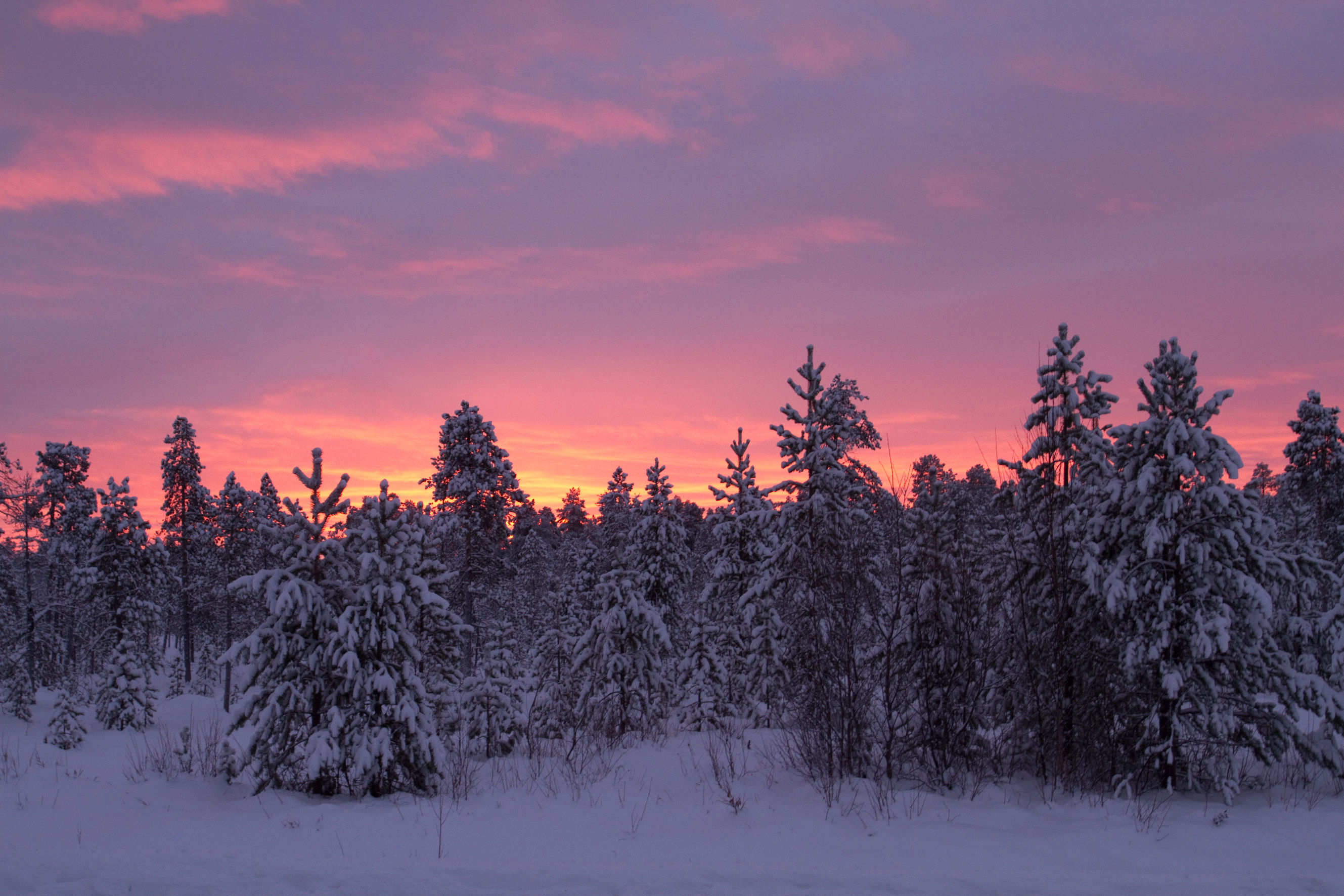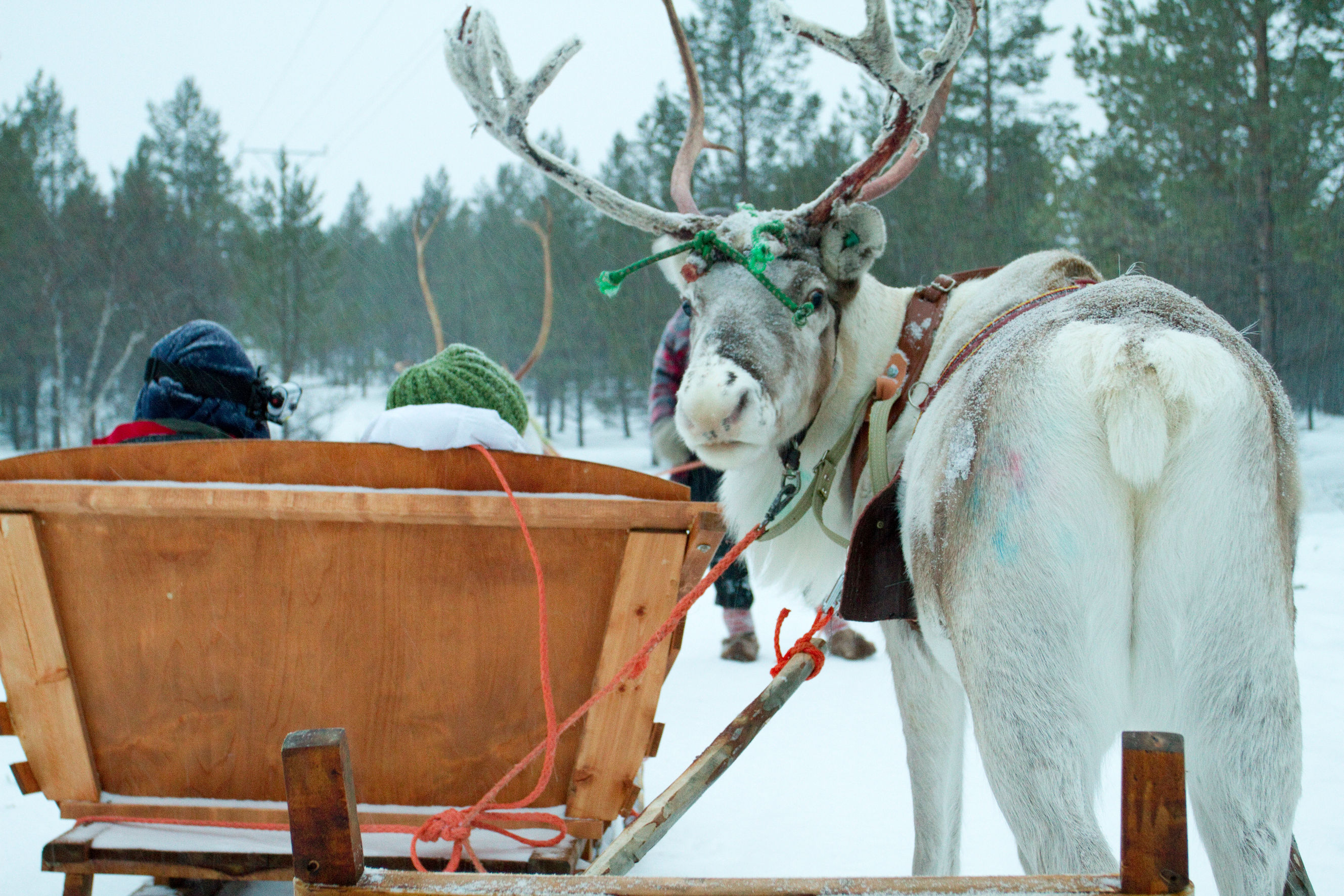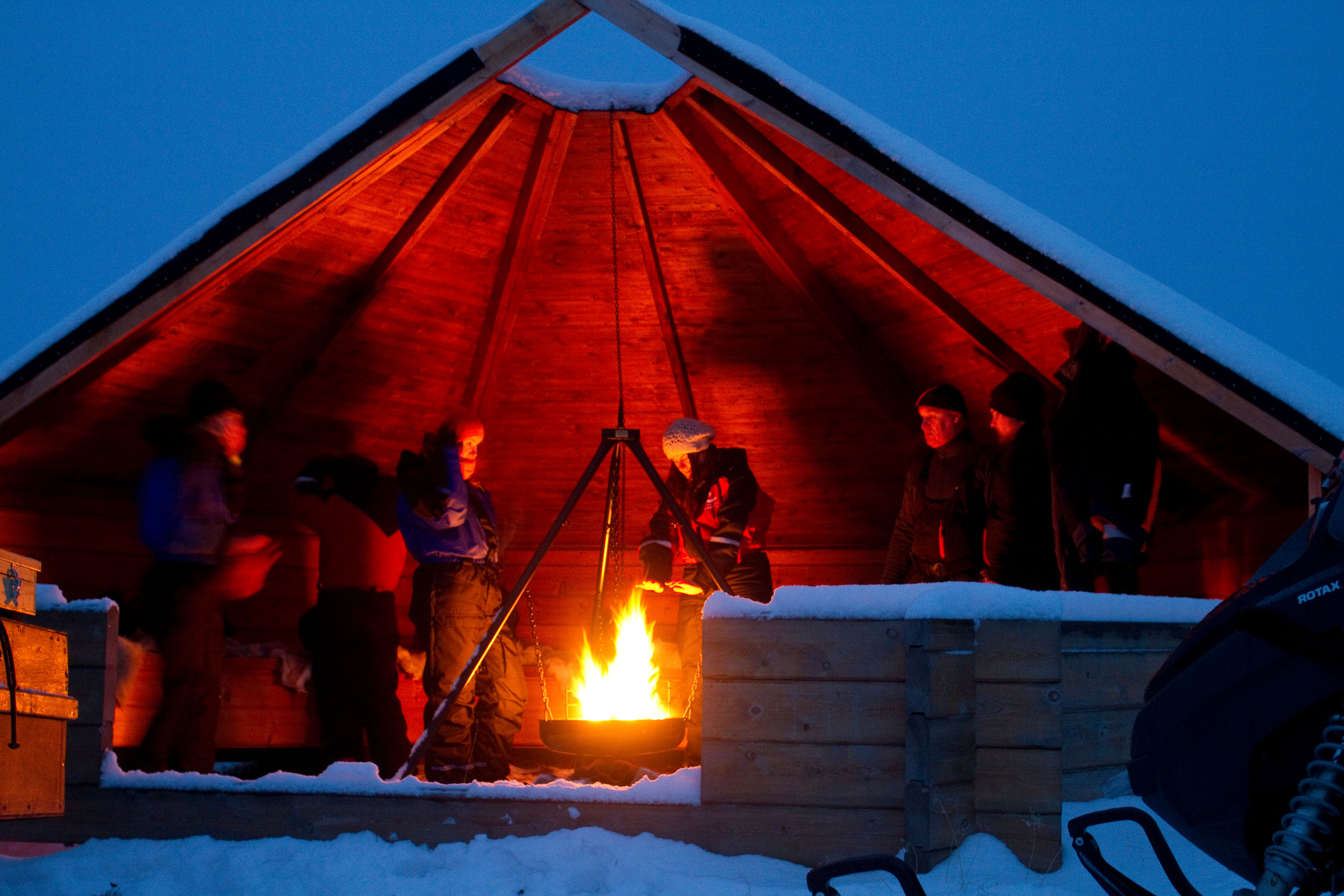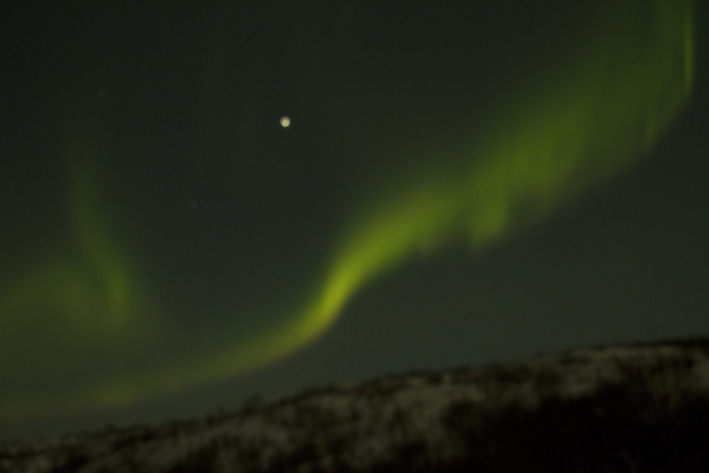It is funny how much you think about light when there is such a lack of it. The polar night, where the sun doesn't rise above the horizon from late November to mid-January, drapes the north of Finland in a wintry cloak of darkness, bringing with it biorhythm-altering changes. It is one of the first things that strikes you in the frozen wilds of Lapland at this time of year. With the absence of daylight, time moves slower and means less. The rosy blush of dawn around mid-morning marks daybreak and the final flare of a would-be sunset nightfall at around 2pm. The polar night invites rest, contemplation and introspection; it sets the senses on high alert and throws the elemental into sharp relief.

The flakes are falling thick and fast en route to Utsjoki, 70°N of the Arctic Circle, but at -10°C, it is a little too mild for December, the driver informs me, as we dodge reindeer and foxes who dally with their lives by flitting across the main road, slick with snow. Given that the temperature here dipped to -51°C in 2013, he has a point.
Nature feels that bit closer in Utsjoki, where the salmon-rich Teno River forms a natural border with Norway, and the river valley rises to high fells plumed with stubby birch trees and lichen. Blanketed in sparkling white, the landscape is the stuff of childhood fantasies and the timber cottages at Valle Holiday Village (http://www.poronpurijat.fi/en/activity-services.php?lang=FI) fit neatly into the winter wonderland picture. It's here I receive a warm welcome from Sami hosts Petteri, Eetu and Anne Valle. After a generous meal of sautéed reindeer meat and cheese with cloudberry jam, I step out into the crisp Arctic night in the hope of glimpsing the aurora borealis, but the cloud lingers and the Northern Lights are a no-show.
With the first faint glow of dawn, we are off the next morning to the Valle family reindeer farm. Though many of the indigenous Sami from these parts now have day jobs and iPhones, their lifestyle remains firmly rooted in tradition; they are quietly proud of their language, clothing and culture. Some aspects of their lifestyle resemble that of the modern-day hunter gatherer - they fish in these pristine lakes and rivers and forage in these woods for wild mushrooms and berries. Reindeer herding is still their lifeblood, providing food, clothing and transport.
While there are undoubtedly faster ways of getting from A to B, none is more magical than by reindeer-driven sleigh. Swaddled in blankets and hides, we glide past frosted landscapes in glorious slow motion, which begin to blur as the reindeer pick up speed, panting with the exertion, their tongues hanging out like dogs. The reindeer guiding my sleigh has a rebellious streak, occasionally attempting to dash off into the woods or remaining stubborn and immobile until Petteri shows it who wears the antlers.

Around early afternoon, day has already begun to fade to dusk and a fire is warming up the lavvu tent nicely, where we pause for a Sami-style tea break, with sausages, hot drinks served in traditional wooden kuksa cups and shared stories. "The wolverines and lynx that roam this region are protected species, but they pose a very real threat to reindeer," Eetu admits. And bears? "Oh yes, there are brown bears up here, but you rarely see them," says Petteri. "Sometimes we might tell our neighbours we've seen a bear to protect our best cloudberry patches in summer," he grins. The gathering of these swamp-growing, amber-gold berries is a seriously territorial business, it seems.
As the shadows dance in the chill of the polar night, Petteri sings a Sami joik, a gently lilting rhythmic poem - this one is dedicated to his grandfather, he says, whose memory is now burning as brightly as the fire in the tent.
Following the meandering Teno River some 40km northeast the next day brings me to Nuorgam. Here Raimo, his Sami wife Marjatta and their son Santeri run the Nuorgam Holiday Village (http://www.nuorgaminlomakeskus.fi), a cluster of wooden cabins, some complete with own sauna, surrounded by glorious middle-of-nowhere wilderness. Over a mug of glögi (hot spiced berry juice) and piparkakku (gingerbread), Raimo tells me about local winter activities, which range from cross-country skiing and snowshoeing to ice-fishing and snowmobiling. "Maybe we will be lucky with the northern lights," he says, pointing to a chart that indicates high activity. "We see them around 40 times a year here." In fact, the lights are always there, but sometimes they are hidden behind clouds. "The best time to see proper colours is in the early evening when they hover low on the horizon."

But the only light that night is that from our head-torches, as we slip into snowshoes and pick our way up to the fells in quiet exhilaration, still ruddy-faced from afternoon saunas and a satisfying dinner of cheese soup with smoked reindeer, roasted whitefish and blueberry parfait.
A snowmobile is ready and waiting to whisk me up to the heights the next morning. Speed is not of the essence, though the snowmobile is significantly faster and certainly less temperamental than the reindeer. Within no time we reach a frozen lake high above the plains. "Time for a little ice-fishing," says Raimo. With skill and apparent ease, he bores a hole into the ice with an auger, then lowers a jig rod. I give it a go and am surprised at how simple it is, but though the cold is biting, the trout and the Arctic char are not.
An almost-full moon peeks tentatively out of the clouds and patches of sky are starting to clear. After a brief stop at the Norwegian border, where a sign indicates the highest point in Finland and the EU, we drive up to the heights for a little sky-gazing, but it seems the lights aren't coming out to play. Tucked up in bed an hour later, however, I hear a rap on the door. "The lights," Raimo whispers in the hush of night. "You can see the auroras." Within seconds I am outside, watching in wonder as the lights caused by the solar winds interacting with charged particles in the earth's magnetic field paint the night sky. It's as though the Norse gods are drawing across the heavens with invisible ink. What I see is a barely visible pale light, shifting and arcing, swaying and falling, only to vanish seconds or minutes later. What my camera captures is cascading curtains of green light.

The Sami have deep respect for the northern lights and remain silent in their presence. The aurora borealis is steeped in lore and legend: some say the lights are the dancing spirits of ancestors. Their Sami name revontulet, or 'fox fires', refers to the myth that they were created by an Arctic fox running through the snow, who sent sparks flying into the sky. Anything seems possible, I think, as I gaze up into the crystal-clear night. The lights are fantastic and the Sami are right - they leave you speechless and appear as though not quite from this world.
Finnair (http://www.finnair.com) flies to Ivalo via Helsinki from London Heathrow and Manchester, with return flights from £228 and £250 respectively. There are up to four flights a day from Helsinki to Ivalo, with return flights from £149. For the lowdown on Lapland and Finland, visit www.visitfinland.com.